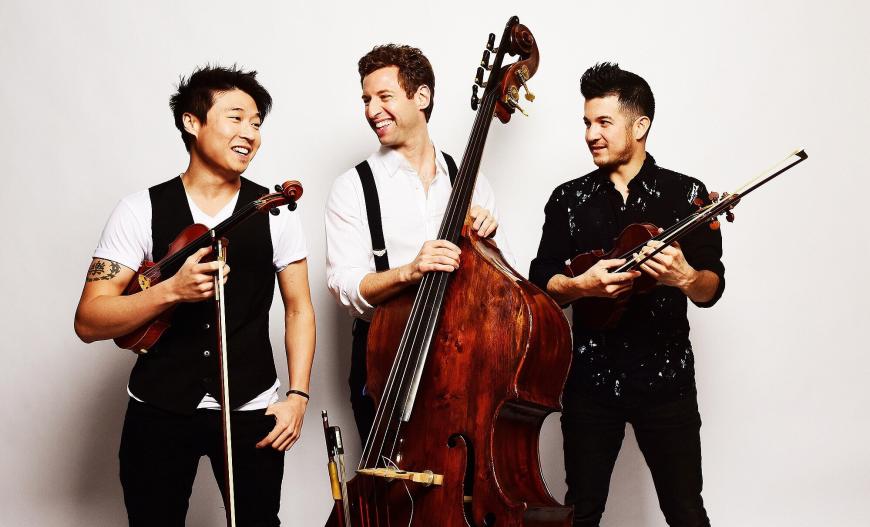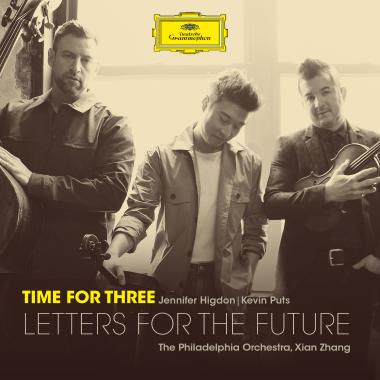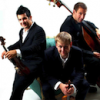
“Defying convention and boundaries, Time for Three stands at the busy intersection of Americana, modern pop, and classical music.” So declares the website of the Juilliard- and Curtis-trained “band” of three, whose latest Deutsche Grammophon album, Letters for the Future, unites them with The Philadelphia Orchestra under Xian Zhang.
The orchestra connection is hardly a matter of happenstance for this trio. Two of its founding members, violinist Zachary DePue and bassist Ranaan Meyer, were members of The Philadelphia Orchestra when, maybe two decades ago, the lights went out during a concert, and the two men delighted the audience by launching into a spontaneous acoustic jam session in the dark.

DePue may have since decided to stick to his “day job” as concertmaster of the Indianapolis Symphony Orchestra, but Time for Three’s focus appears unchanged. The easy-on-the-ear repertoire of the current group — Nick Kendall and Charles Yang (violin and voice) and Meyer (double bass and voice) — seems like the antithesis of the repertoire espoused by Bang on a Can, Kronos Quartet, and other cutting-edge ensembles that are far more defiant, political, and far-ranging in their approach.
As a follow-up to its first eponymously titled album for DG, whose guest soloists included Jake Shimabukuro, Joshua Radin, and Branford Marsalis, Time for Three goes “contemporary classical” with two concertos written for the group: Kevin Puts’s four-movement Contact (which the trio performed with the San Francisco Symphony in July of this year) and Jennifer Higdon’s three-movement Concerto 4-3.
In Contact, which explores potential encounters with beings from other galaxies, Puts seems to prefer harmony and conviviality above all else. There are some exciting swells and dramatic moments in the piece, but Contact’s foundation in the Romantic idiom surfaces in its first movement, “The Call.” In his two-paragraph program note, Puts likens this movement to an amiable message from Earth to beings elsewhere in the galaxy. The Morse code-like rhythms of “Codes (Scherzo)” are exciting fun — a bit reminiscent of Mason Bates’s danceable approach to disaster. The third movement, “Contact,” is imbued with a touching sense of yearning, and the final “Convivium” is lovely to the core. By the concerto’s end, you may be up for inviting these aliens to dinner.
Higdon was familiar with Time for Three’s embrace of bluegrass and Americana when The Philadelphia Orchestra asked her to write a piece for the band. Her Concerto 4-3, whose optional cadenza between the first two movements allows the trio to strut its stuff, consists of three movements: “The Shallows,” “Little River,” and “Roaring Smokies.” Each is named for a river that runs through the Smoky Mountains of Appalachia.
“The Shallows” flows to an engagingly positive, thigh-slapping beat, complete with a lovely wordless chorus from Time for Three. You might actually be able to clog your way through it. “Little River” abounds in languid nostalgia, and “Roaring Smokies” fiddles and jams its way home to the expected big flourish. It’s all good fun and classically American in the sense that over a century’s worth of chromaticism, atonal shock, and disruption has ceded to feel-good music that only challenges if you, like me, were hoping for something with far more bite and substance.


